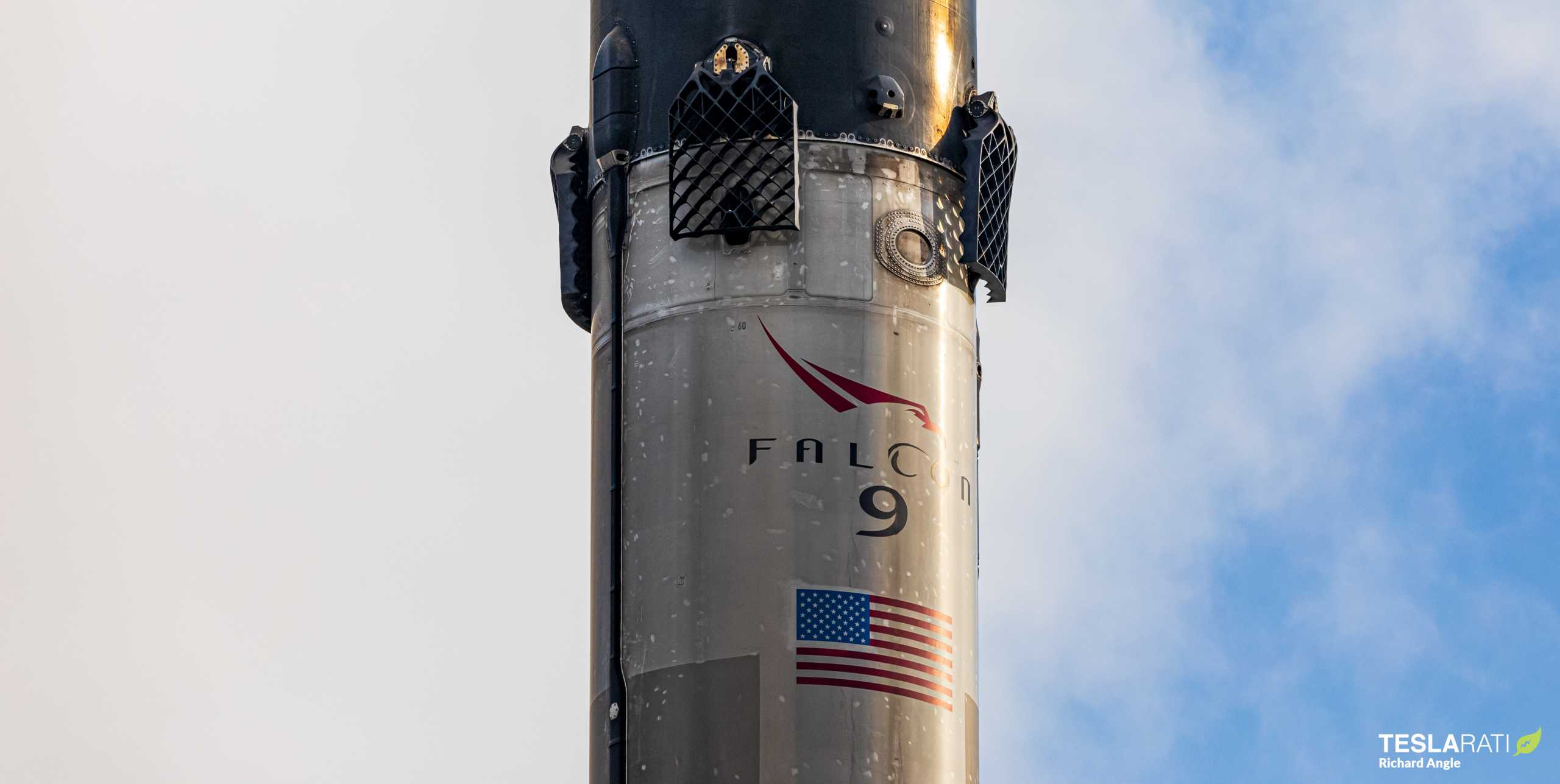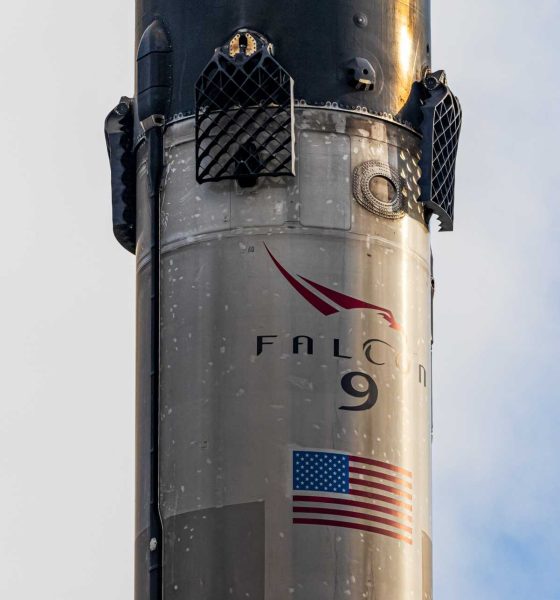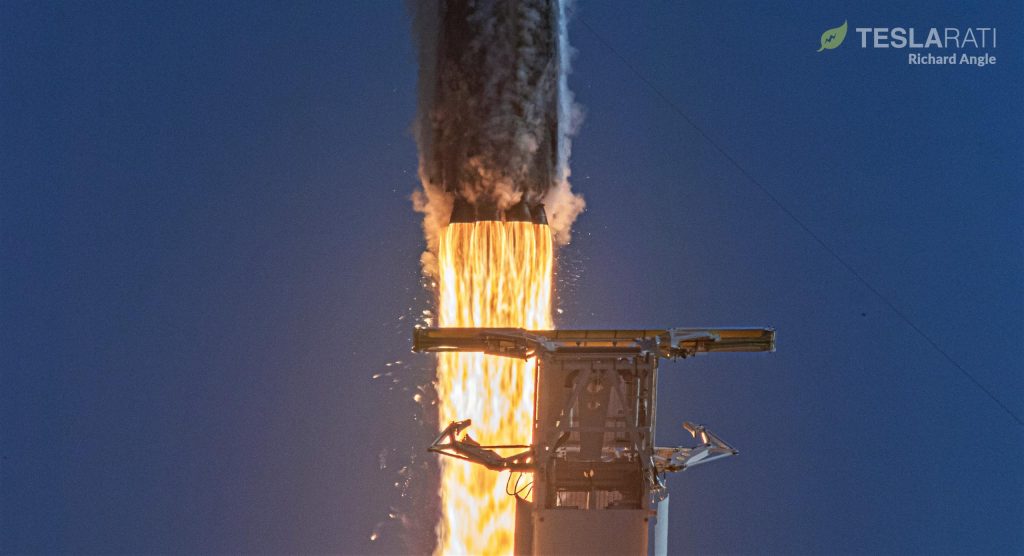

News
Scrubtober strikes again: faulty SpaceX rocket camera aborts Starlink-14 launch
Update: SpaceX’s next Starlink-14 launch attempt appears to be scheduled no earlier than (NET) 11:31 am EDT (15:31 UTC), Saturday, October 24th, ending the possibility of Falcon 9 booster B1060 setting a new turnaround record. If successful, the mission will still mark the first time SpaceX has complete three Starlink launches in one month.
CEO Elon Musk says that a faulty camera on a SpaceX Falcon 9 rocket’s new upper stage lead the company to abort its October 22nd Starlink-14 launch attempt around 15 minutes before liftoff.
The abort continues what has been less than affectionately termed “Scrubtober” after a relentless string of delays that actually began closer to mid September or even late August. Multiple delays for ULA’s Delta IV Heavy NROL-44 launch quickly snowballed into several SpaceX Falcon 9 launch delays, follower by additional weather-related SpaceX launch delays in September. Then, once again, additional ULA NROL-44 delays caused additional Falcon 9 delays, followed by two rare technical delays for the same SpaceX missions.
The Starlink mission in question finally launched on October 5th, while SpaceX’s third US military GPS III satellite launch was indefinitely scrubbed when an issue with several booster engines triggered a last-second abort. Thankfully, SpaceX was able to launch another Starlink mission – Starlink V1 L13 or Starlink-13 on October 18th – albeit only after more than a week of delays. Now, already delayed by 24 hours for unknown reasons, SpaceX’s Starlink-14 mission suffered its own launch abort just ~15 minutes before liftoff, continuing the plague that is Scrubtober.
Set to deliver another ~16 metric ton (~35,000 lb) batch of 60 Starlink v1.0 satellites to low Earth orbit (LEO), Starlink-14 will be SpaceX’s 14th operational Starlink launch and 15th overall, as well as the 13th Starlink launch in 2020 alone.
As usual, the mission will use SpaceX’s Falcon 9 rocket, a two-stage, 70m (~230 ft) tall launch vehicle powered by liquid oxygen and refined kerosene (RP-1) propellant. Weighing more than 550 metric tons (1.2 million lb) fully fueled, the first stage (booster) produces more than 7600 kilonewtons of thrust (1.7 million lbf) at liftoff with nine Merlin 1D engines. On the global stage, Falcon 9 is the most reliable operational launch vehicle in the world, having consecutively completed 67 successful missions since January 2017.

Continuing to demonstrate the ironic fact that SpaceX’s flight-proven rockets have begun to be more reliable than new hardware, Falcon 9 booster B1060 – onto its third launch and landing – apparently remains ready for launch despite issues with a camera on Starlink-14’s new expendable upper stage. As previously discussed on Teslarati, B1060 was on track to set a new world record for orbital-class rocket turnaround, launching twice in 49 days if Starlink-14 had avoided today’s abort. Set by another Falcon 9 booster just three months ago, SpaceX could still break its own 51-day turnaround record if it can inspect and recycle the rocket for another Starlink-14 launch attempt on October 23rd.

Elon Musk
Elon Musk and Tesla AI Director share insights after empty driver seat Robotaxi rides
The executives’ unoccupied tests hint at the rapid progress of Tesla’s unsupervised Robotaxi efforts.

Tesla CEO Elon Musk and AI Director Ashok Elluswamy celebrated Christmas Eve by sharing personal experiences with Robotaxi vehicles that had no safety monitor or occupant in the driver’s seat. Musk described the system’s “perfect driving” around Austin, while Elluswamy posted video from the back seat, calling it “an amazing experience.”
The executives’ unoccupied tests hint at the rapid progress of Tesla’s unsupervised Robotaxi efforts.
Elon and Ashok’s firsthand Robotaxi insights
Prior to Musk and the Tesla AI Director’s posts, sightings of unmanned Teslas navigating public roads were widely shared on social media. One such vehicle was spotted in Austin, Texas, which Elon Musk acknowleged by stating that “Testing is underway with no occupants in the car.”
Based on his Christmas Eve post, Musk seemed to have tested an unmanned Tesla himself. “A Tesla with no safety monitor in the car and me sitting in the passenger seat took me all around Austin on Sunday with perfect driving,” Musk wrote in his post.
Elluswamy responded with a 2-minute video showing himself in the rear of an unmanned Tesla. The video featured the vehicle’s empty front seats, as well as its smooth handling through real-world traffic. He captioned his video with the words, “It’s an amazing experience!”
Towards Unsupervised operations
During an xAI Hackathon earlier this month, Elon Musk mentioned that Tesla owed be removing Safety Monitors from its Robotaxis in Austin in just three weeks. “Unsupervised is pretty much solved at this point. So there will be Tesla Robotaxis operating in Austin with no one in them. Not even anyone in the passenger seat in about three weeks,” he said. Musk echoed similar estimates at the 2025 Annual Shareholder Meeting and the Q3 2025 earnings call.
Considering the insights that were posted Musk and Elluswamy, it does appear that Tesla is working hard towards operating its Robotaxis with no safety monitors. This is quite impressive considering that the service was launched just earlier this year.
Elon Musk
Starlink passes 9 million active customers just weeks after hitting 8 million
The milestone highlights the accelerating growth of Starlink, which has now been adding over 20,000 new users per day.

SpaceX’s Starlink satellite internet service has continued its rapid global expansion, surpassing 9 million active customers just weeks after crossing the 8 million mark.
The milestone highlights the accelerating growth of Starlink, which has now been adding over 20,000 new users per day.
9 million customers
In a post on X, SpaceX stated that Starlink now serves over 9 million active users across 155 countries, territories, and markets. The company reached 8 million customers in early November, meaning it added roughly 1 million subscribers in under seven weeks, or about 21,275 new users on average per day.
“Starlink is connecting more than 9M active customers with high-speed internet across 155 countries, territories, and many other markets,” Starlink wrote in a post on its official X account. SpaceX President Gwynne Shotwell also celebrated the milestone on X. “A huge thank you to all of our customers and congrats to the Starlink team for such an incredible product,” she wrote.
That growth rate reflects both rising demand for broadband in underserved regions and Starlink’s expanding satellite constellation, which now includes more than 9,000 low-Earth-orbit satellites designed to deliver high-speed, low-latency internet worldwide.
Starlink’s momentum
Starlink’s momentum has been building up. SpaceX reported 4.6 million Starlink customers in December 2024, followed by 7 million by August 2025, and 8 million customers in November. Independent data also suggests Starlink usage is rising sharply, with Cloudflare reporting that global web traffic from Starlink users more than doubled in 2025, as noted in an Insider report.
Starlink’s momentum is increasingly tied to SpaceX’s broader financial outlook. Elon Musk has said the satellite network is “by far” the company’s largest revenue driver, and reports suggest SpaceX may be positioning itself for an initial public offering as soon as next year, with valuations estimated as high as $1.5 trillion. Musk has also suggested in the past that Starlink could have its own IPO in the future.
News
NVIDIA Director of Robotics: Tesla FSD v14 is the first AI to pass the “Physical Turing Test”
After testing FSD v14, Fan stated that his experience with FSD felt magical at first, but it soon started to feel like a routine.

NVIDIA Director of Robotics Jim Fan has praised Tesla’s Full Self-Driving (Supervised) v14 as the first AI to pass what he described as a “Physical Turing Test.”
After testing FSD v14, Fan stated that his experience with FSD felt magical at first, but it soon started to feel like a routine. And just like smartphones today, removing it now would “actively hurt.”
Jim Fan’s hands-on FSD v14 impressions
Fan, a leading researcher in embodied AI who is currently solving Physical AI at NVIDIA and spearheading the company’s Project GR00T initiative, noted that he actually was late to the Tesla game. He was, however, one of the first to try out FSD v14.
“I was very late to own a Tesla but among the earliest to try out FSD v14. It’s perhaps the first time I experience an AI that passes the Physical Turing Test: after a long day at work, you press a button, lay back, and couldn’t tell if a neural net or a human drove you home,” Fan wrote in a post on X.
Fan added: “Despite knowing exactly how robot learning works, I still find it magical watching the steering wheel turn by itself. First it feels surreal, next it becomes routine. Then, like the smartphone, taking it away actively hurts. This is how humanity gets rewired and glued to god-like technologies.”
The Physical Turing Test
The original Turing Test was conceived by Alan Turing in 1950, and it was aimed at determining if a machine could exhibit behavior that is equivalent to or indistinguishable from a human. By focusing on text-based conversations, the original Turing Test set a high bar for natural language processing and machine learning.
This test has been passed by today’s large language models. However, the capability to converse in a humanlike manner is a completely different challenge from performing real-world problem-solving or physical interactions. Thus, Fan introduced the Physical Turing Test, which challenges AI systems to demonstrate intelligence through physical actions.
Based on Fan’s comments, Tesla has demonstrated these intelligent physical actions with FSD v14. Elon Musk agreed with the NVIDIA executive, stating in a post on X that with FSD v14, “you can sense the sentience maturing.” Musk also praised Tesla AI, calling it the best “real-world AI” today.








